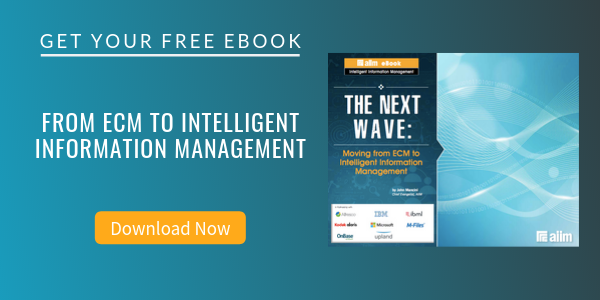
8 Things That You Should Know about Open Source ECM
Enterprise Content Management (ECM)
1. You Can Get Started on an ECM Project – NOW.
Need to get an ECM project moving now--even if you don't have much budget today? Open source ECM offerings let companies get started with early requirements research, prototyping, and piloting just with a simple download and installation. In the spirit of community, of transparency, of truly believing that ECM is a critical platform for any customer in the 21st-century knowledge economy, open-source ECM vendors actually want you to get moving forward on a project.
2. ECM from the Open Source World Puts Value on Things that Matter to You – Not the Vendor.
Companies who need Enterprise Content Management will measure their return on investment once the system is up and running, and savings and gains are evident. Automation of routine transactions, reduced storage costs, faster reuse and retrieval, more time to let your knowledge workers focus on the important stuff – this is why you RFP'd. But most proprietary ECM software vendors derive their value on the upfront seat purchase – hence the haggling and legal review over the license acquisition phase of the deal. The customer and vendor parties aren't in alignment on what is of mutual benefit. Open source ECM vendors make it easier to align the value – applications can be downloaded at no upfront cost, letting customers invest in the support subscriptions when they're ready to go live.
3. You Don't Need to be a Developer to Use and Deploy ECM from Open Source Vendors.
There's a lingering out-of-date perception that open source applications are intended for the uber-geeks. That's no longer true as we approach 2010. Content management applications coming out of the open-source world today are simple to download and deploy and have clean and approachable UIs designed for everyday information workers. They're built to be used by a wide range of customer skill sets and IT platforms, but still ensure companies with specific needs have full access to source code to meet unique requirements.
4. Don't Confuse “Open Source” with “Free."
It's important to approach open source ECM with the same long-term planning as traditional ECM products. Be careful not to skimp on the appropriate needs-analysis, training, change management, and ongoing care and feeding of the underlying IT infrastructure. While you don't need to pay for typical license seats with open source, you do need to plan for all the same ongoing ECM deployment and support costs to be successful.
5. Open Source ECM Vendors Have Been Walking the Talk Around Enterprise 2.0 for Years.
Was 2009 the year your current vendor finally set a goal to be more transparent? More community-driven? Be more open to input and feedback from customers and partners? Guess what... this is how open source ECM vendors have been operating for years. Customers drive innovation; roadmaps can be turned on a dime to support cool new things or updated platforms. Tips and tricks are openly shared online across community sites.
6. Not All Vendor Business Models Are the Same.
Nobody likes surprises. When doing due diligence on ECM products to short-list, make sure there is full transparency on which products are vendor-supported and which are not. Some open-source vendors have free products which are great for demo/prototyping but are not actually supported for production use. Ensure the vendor is willing and able to support the product that you've tested and meets your requirements. Also, understand the type of license agreement the vendor uses to ensure it fits your company's business needs. How well will it fit into the rest of the organizational technology ecosystem that increasingly is a mixture of open source, SaaS, and proprietary enterprise applications? There are a small number of well-known license options, making it easy to verify what will work for you.
7. Open Source ECM products are not being written by some guy in his mom's basement.
All of the major industry analysts agree that open source is here to stay. Companies in this space are growing, doing business globally, and invest in the same marketing, sales, development and support resources as traditional ECM vendors.... maybe even more when it comes to those last two because peer to peer and community contributions are highly valued.
8. ECM is no longer a frill – it is an essential platform for the 21st-century digital economy.
The rise of the web means small or new businesses can compete globally with bigger incumbents. But with this democratization of opportunity comes the inevitable democratization of risk. New and emerging regulations – including the US Federal Rules of Civil Procedure regarding electronically stored information – apply to everyone – not just large publicly traded firms or regulated industries. The need for an ECM platform to share, protect, preserve, and dispose of business content is now for everybody. Innovation, ideas, intelligence – this valuable business content is stored in our electronic corporate memory. Open source ECM helps keep this playing field level.
About Cheryl McKinnon
Cheryl McKinnon is a principal analyst at Forrester Research, serving enterprise architecture professionals; she helps them support their firm's need for content and collaboration technology capabilities in the age of the customer. Cheryl delivers research and advisory services in areas including enterprise content management (ECM), content archiving, enterprise file sync and share, document-centric collaboration, life-cycle management, information governance, and file analytics.



